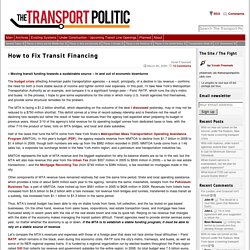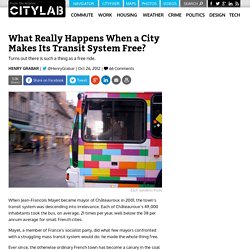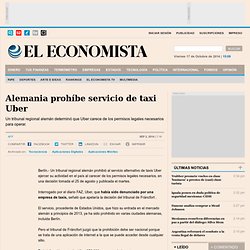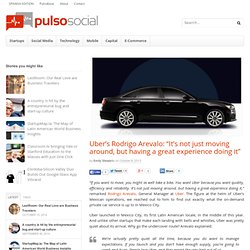

Why People in Cities Walk Fast. Late last week our own Richard Florida wondered on Twitter whether pedestrian walking speeds might indicate a city's economic activity — reflecting some sort of "urban metabolism," as he put it.

Turns out there's a rather long history of research into the speed of walking in cities, and that the evidence reveals, among other things, a strong connection between fleetness of foot and fatness of wallet. Call it a sign of the Cantering Class. Most work on urban walking speed dates back to 1976, when psychologists Marc and Helen Bornstein published a provocative paper on the topic in the top-tier journal Nature. The Bornsteins wanted to understand the relationship between a growing human population and an individual person's behavior.
So they planted themselves in major activity centers of 15 different cities and towns in six different countries on warm sunny days, and timed how fast a couple dozen solitary, unsuspecting pedestrians covered about 50 feet of space. In 1989 the geographers D. How to Fix Transit Financing. » Moving transit funding towards a sustainable source – in and out of economic downturns The budget crisis affecting American public transportation agencies – a result, principally, of a decline in tax revenue – confirms the need for both a more stable source of income and tighter control over expenses.

In this post, I’ll take New York’s Metropolitan Transportation Authority as an example, and compare it to a significant foreign peer – Paris’ RATP, which runs the city’s métro and buses. In the process, I hope to give some explanations for the crisis in which many U.S. transit agencies find themselves, and provide some structural remedies for the problem. The MTA is facing a $1.2 billion shortfall, which depending on the outcome of the deal I discussed yesterday, may or may not be reduced to a $750 million shortfall.
Half of the taxes that fund the MTA come from New York State’s Metropolitan Mass Transportation Operating Assistance Program (MMTOA). What Really Happens When a City Makes Its Transit System Free? When Jean-Francois Mayet became mayor of Châteauroux in 2001, the town’s transit system was descending into irrelevance.

Uber no teme a una regulación. Has launched in Mexico City! We love Mexico and the biggest city on Earth has shown a lot of #UberLOVE since we first put cars on ground in mid-June.

From hipsters in Roma to fresas in Bosques and hippies in Coyoacán, word has gotten out and we are making it official: Uber has launched in Mexico City! Huge thank you to Daniela Schmidt, Erendira Ibarra, El Diablito, and all of our guests for coming to our launch dinner. We had a fantastic time sharing our story with all of you. Mexico City is defined by its exceptional food, its patience-testing traffic, and its vibrant nightlife. España ofrece vehículos ejecutivos con chofer en Madrid, Barcelona, Málaga, Coruña, Bilbao y Vitoria - Cabify. Airbnb y Uber muestran que es tiempo de colaborar: Tapscott.
Don Tapscott, experto en negocios y coautor del libro Wikinomics, afirma que los emprendedores se enfrentan a sectores que siguen un modelo desgastado que ha generado desempleo y desigualdad.

Don Tapscott. Cortesía: Wobi En mayo del 2013, el Ayuntamiento de Nueva York declaró que el modelo de Airbnb —una red social para el arrendamiento de propiedades entre particulares— era ilegal por violar una ley que favorece al sector hotelero, pues prohíbe a los ciudadanos alquilar sus casas por un periodo menor a un mes. Negocios como Airbnb están basados en un nuevo paradigma económico basado en la colaboración y en compartir: cualquier persona puede iniciar un negocio al compartir sus bienes a otros.
Tribunal alemán revierte prohibición contra Uber. Un tribunal de Fráncfort, que había tramitado con carácter urgente la querella de una central de taxis, levantó la prohibición pronunciada entonces contra la start up californiana.

Un tribunal regional alemán que había prohibido a principios de mes la utilización del controvertido servicio alternativo de taxis Uber, revirtió este martes su decisión, anunció la corte. Los jueces consideraron este martes que el caso no presentaba un carácter de urgencia, según un comunicado del tribunal. Sin embargo, se precisa que el tribunal "sigue considerando ilegal" el modelo de Uber, que permite a choferes o particulares, por medio de una aplicación en smarthpone, ofrecer sus servicios a tarifas a menudo inferiores a los taxis. Uber está presente en cinco ciudades alemanas, entre ellas la capital y Fráncfort. Alemania prohíbe servicio de taxi Uber. Un tribunal regional alemán determinó que Uber carece de los permisos legales necesarios para operar.

Urban Age Cities Compared. Where People Live Unlike the more generic measure of ‘net density’ presented in the previous pages, residential urban density measures how many people live in relative proximity in cities, shown below by the number of people living in each square kilometre of a 100 x 100 kilometres urban region.

Residential density is largely driven by topographical constraints, the location of public transport and other infrastructure, but also by each city’s inherited traditions of urban culture and development. Density differs widely, from the high densities of Hong Kong, Mumbai and central areas of Istanbul and Shanghai to the much lower density pattern of London. Johannesburg shows limited areas of higher density set around a downtown that no longer has a residential population, in the midst of a very low-density sprawl. Signs of ageing The age distribution among urban populations reveals a considerable variation that closely mirrors national and global demographic trends. Uber en México; la competencia a taxistas mexicanos ha llegado. Los smartphones han alterado para siempre la forma en que los humanos interactuamos y llevamos a cabo muchas acciones cotidianas.

Pero también están alterando el modelo de negocio para algunos servicios públicos tradicionales y el transporte en taxi es uno de ellos. ¿Quién está provocando la revolución de este servicio? Uber y su modelo de quien tenga un automóvil puede ser taxista. Tanto gobiernos locales como empresas de todo el mundo han desarrollado apps para facilitarle la vida a los usuarios del transporte público.
De esta forma hay apps que te indican la mejor ruta y tiempos para llegar a un destino determinado tomando cualquier tipo de transporte o una mezcla de ellos. En cuanto al servicio de taxis ya existen varias apps al respecto y ya no es niguna sorpresa ver en ciudades mexicanas a taxis con sus smartphones pegados al parabrisas recibiendo órdenes de servicio. Uber's Rodrigo Arevalo: "It's not just moving around, but having a great experience doing it"
“If you want to move, you might as well take a bike.

You want Uber because you want quality, efficiency and reliability. It’s not just moving around, but having a great experience doing it,” remarked Rodrigo Arevalo, General Manager at Uber. The figure at the helm of Uber’s Mexican operations, we reached out to him to find out exactly what the on-demand private car service is up to in Mexico City. Uber launched in Mexico City, its first Latin American locale, in the middle of this year.